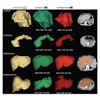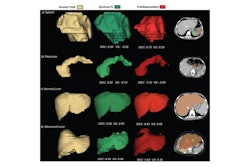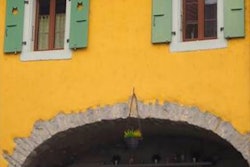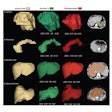3D visualization software that uses CT and MR images and is modeled on video games to help surgeons better view anatomical structures will now be available at no cost.
Rady Children’s Hospital in San Diego is making its Arc Viewer -- a software platform developed by the hospital's 3D Innovations Lab -- available to other hospitals and educators across the U.S. The platform allows clinicians at any hospital to interact with virtual 3D reconstructions of patient anatomy.
“We’re trying to create a simple solution so that our teams can look at 3D information without [needing] an intermediary,” said Justin Ryan, PhD, director of the 3D Innovations Lab. “We like our surgeons to think and act at the speed of thought, and any friction created by complex software takes opportunities away from patient care.”
Radiologists and clinicians alike are turning to 3D imaging to better diagnose conditions and view anatomical structures. Surgeons typically receive assistance from radiology technologists or engineers to view 3D models.
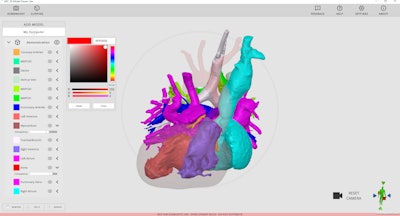 Rady Children's Hospital is making its Arc Viewer, a 3D modeling software developed by the 3D Innovations Lab within the hospital, available to use by other U.S. hospitals at no cost.3D Innovations Lab, Rady Children's Hospital
Rady Children's Hospital is making its Arc Viewer, a 3D modeling software developed by the 3D Innovations Lab within the hospital, available to use by other U.S. hospitals at no cost.3D Innovations Lab, Rady Children's Hospital
Through Arc Viewer, surgeons can view 3D renderings of CT and MRI scans delivered directly as 3D data and interact with the model at their convenience.
The software is built with Unity, a platform of tools for creators to build and grow real-time games, apps, and experiences across multiple platforms. Ryan said that by using video game theory, the team can create 3D modeling software with interfaces that medical staff can easily use, regardless of whether they are trained in radiology. This can help with surgery planning and increasing confidence in the operating room, along with saving time and making way for closer examination of anatomical structures.
“Leveraging this technology really allows our surgeons to interact with complex data more easily,” Ryan said. “Surgeons really crave more information, especially imaging information, to better perform surgeries.”
While Arc Viewer has been used by Rady Children’s Hospital for about a year, it will become available to the public at no cost. However, it will not be open-source and is not intended for diagnostic use. Ryan said the software has received positive feedback from children’s hospital staff. The team worked with hospital leadership and information security leadership to have Arc Viewer approved.
Other projects on which the 3D Innovations Lab is working include an interactive hospital floorplan designer and an app to calculate clinical Z-scores. The lab team also recently launched Media2DICOM, a DICOM standardization software, and spoke on a Comic-Con International panel discussing 3D imaging.
Ryan said the lab team is further developing the model with the aim of creating an easy-to-use interface for medical staff to use.
“It’s been very exciting to develop this process,” he said.


